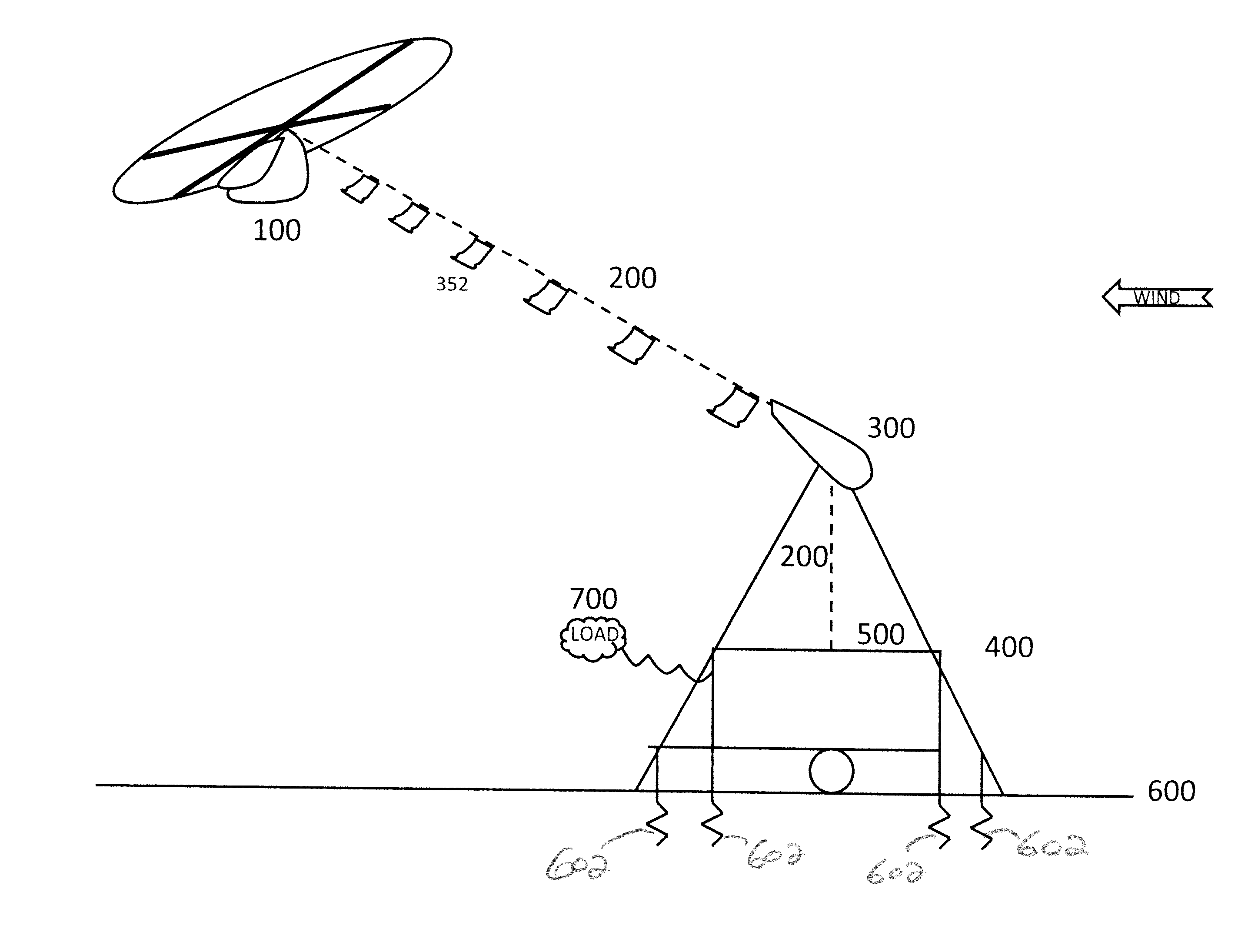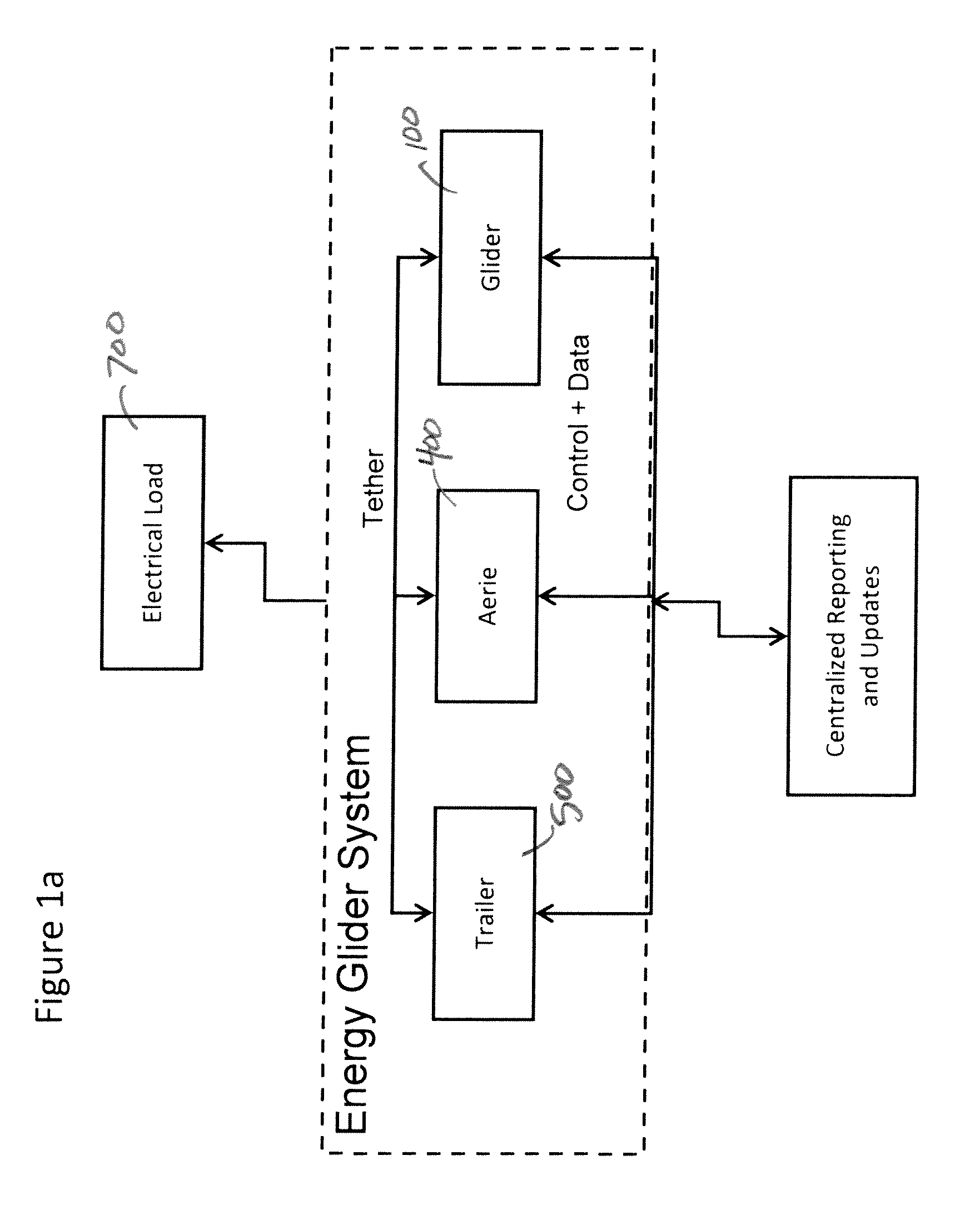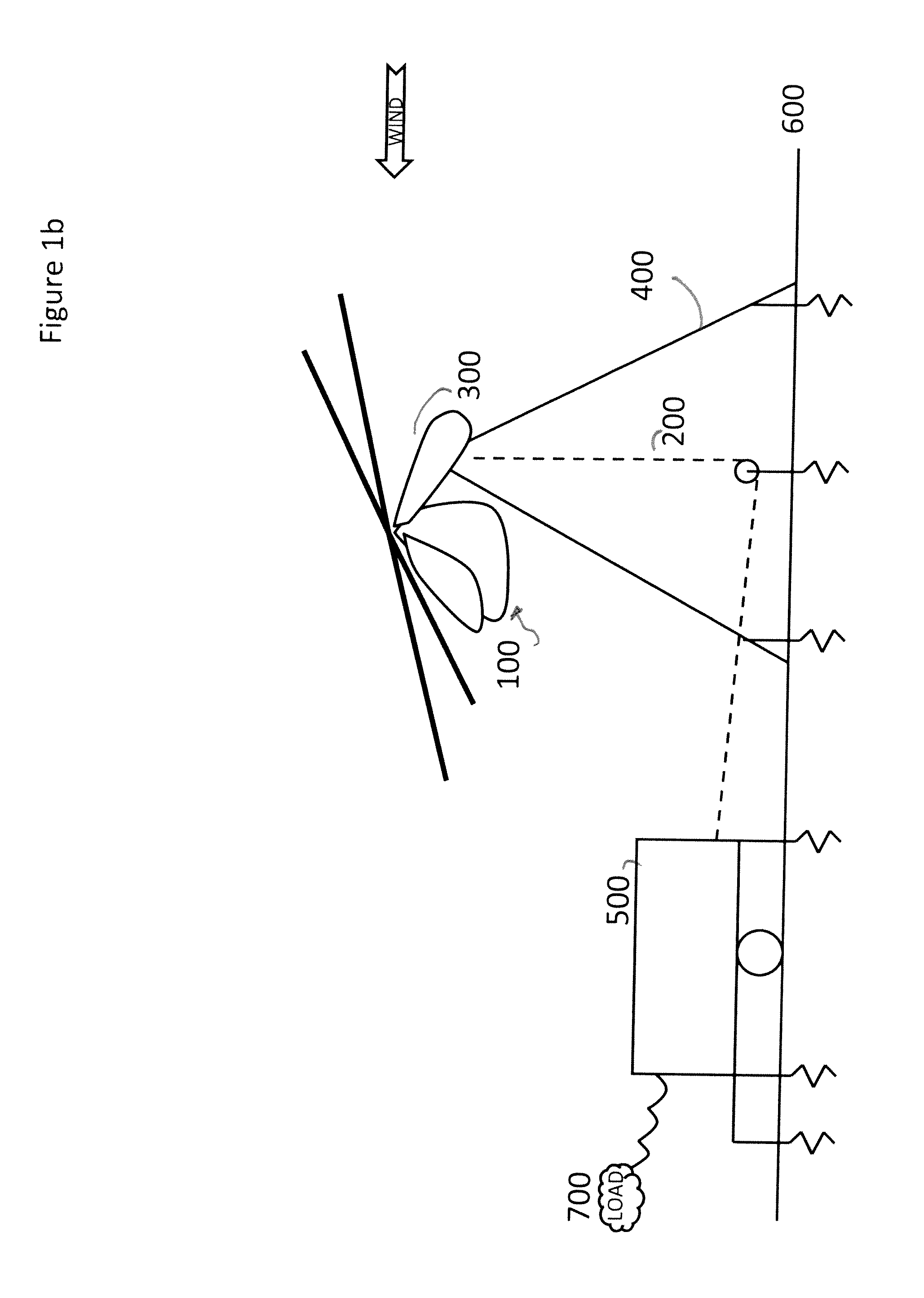Tethered glider system for power generation
a technology of power generation and tethering glider, which is applied in the direction of electric generator control, machines/engines, transportation and packaging, etc., can solve the problems of prior art systems, no awecs has ever become a commercially available product, and the spinning force applied to the generator system on the ground, etc., to achieve constant tether load, constant load, and constant load on the glider
- Summary
- Abstract
- Description
- Claims
- Application Information
AI Technical Summary
Problems solved by technology
Method used
Image
Examples
Embodiment Construction
[0045]An illustrative embodiment is described hereinafter of an Energy Glider system for production of commercial-scale electricity—less than 100 kW of peak power generated with each power stroke. As illustrated in FIG. 1a the energy glider system has three on-site major components: a trailer 500; aerie 400; and glider 100 with an output to an electrical load 700. To be commercially viable in large quantities, the system also requires one off-site component—centralized reporting and updating.
[0046]FIG. 1b illustrates the physical relationship and approximate relative sizes between the three major components—trailer 500, aerie 400, and glider 100, while resting on its cradle 300 atop the aerie 400. A tether 200 connects the glider 100 through the aerie 400 to the trailer 500. The output of the trailer is electricity connected to some electrical load (not shown). The aerie 400 and trailer 500 rest on the ground 600 and are anchored to the ground with multiple ground-anchors, such as o...
PUM
 Login to View More
Login to View More Abstract
Description
Claims
Application Information
 Login to View More
Login to View More - R&D
- Intellectual Property
- Life Sciences
- Materials
- Tech Scout
- Unparalleled Data Quality
- Higher Quality Content
- 60% Fewer Hallucinations
Browse by: Latest US Patents, China's latest patents, Technical Efficacy Thesaurus, Application Domain, Technology Topic, Popular Technical Reports.
© 2025 PatSnap. All rights reserved.Legal|Privacy policy|Modern Slavery Act Transparency Statement|Sitemap|About US| Contact US: help@patsnap.com



